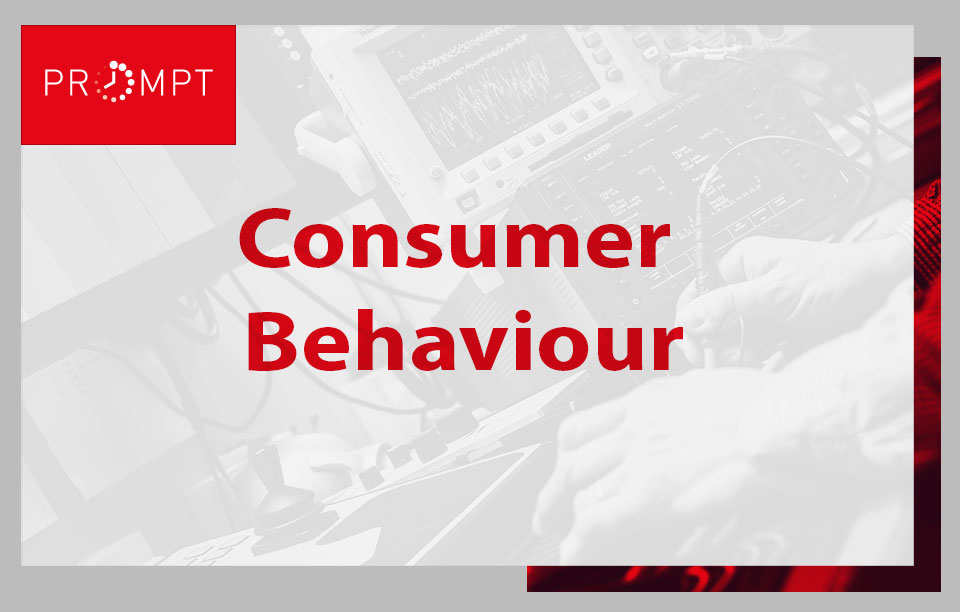|
PROMPT will specifically investigate understanding of the design features that induce premature obsolescence, as well as design features that resist or postpone premature obsolescence. This will include design features concerning physical durability, failure diagnosis and repair as well as design aspects related to consumer behaviour. |

Public Reports
Design guidelines to prevent premature obsolescence from a user/market perspective
2023
Ruth Mugge, Renske van den Berge & Lise Magnier
Delft University of Technology (TU Delft)
In this report, we present the final design guidelines that designers and companies can use to prevent premature obsolescence from a user/market perspective. The specific focus of these design guidelines is the user and market perspective. In other words, what aspects related to the design of the product, service, and business model would encourage consumers to use products
for a longer time period, thereby postponing their replacement. The guidelines served as input for the final general PROMPT testing programme in order to test products on their lifetimes before they go to market.
Premature replacement of well-functioning products and choice for replacement over repair
2022
Renske van den Berge (TU Delft)
Lise Magnier (TU Delft)
Belen Ramos (OCU)
Tom Thysen (TA)
Contact for organisation:
Delft University of Technology (TU Delft)
This report was the base used for follow-up research in Work Package 5, in which we focus on the user- and market-related aspects of premature obsolescence. In this report we provide insights of both qualitative and quantitative consumer studies, in which we analysed how a product’s design features and/or business model influence people’ replacement and repair attitudes and behaviours. We end with a reflection and discuss how the obtained user/market insights are can be useful for the development the PROMPT testing criteria.
Scientific Publications
Until death do us part?
Journal of Industrial Ecology, 2023
Renske van den Berge, Lise Magnier & Ruth Mugg
Delft University of Technology (TU Delft)
Results of interviews (n = 22) with Dutch consumers suggest a positive view on long-lasting products. However, consumers consider themselves unable to estimate how long products should last, which can be detrimental as low expectations tend to negatively influence actual lifetimes. To extend product lifetimes, consumers have limited repair knowledge and ability, and believe repair provides poor value for money. Lifetime extension can also be hindered by market-related factors, such as convenient replacement services, new technological developments, and (attractive) deals. We suggest a product lifetime label should contain relevant and reliable information, and recommend including (extended) warranty information. When information about repairability is included, potential negative responses should be considered. Finally, raising awareness about the environmental impact of short-lived products via a label may have a positive effect but requires more research attention.
Are short product lifetimes ineluctable?
DRS 2022 Conference
Lise Magnier & Ruth Mugge
Delft University of Technology (TU Delft)
There is consensus that product lifetimes are generally decreasing. To create a sustainable society, the circular economy promotes slowing down the use of resources by lengthening product lifetimes. This is especially important for electronic products that are energy-intensive in their production phase and create vast amounts of waste after use. While design strategies have been proposed to lengthen product lifetimes, it is unclear whether consumers deem them effective. This paper proposes an overview of lifetime extension strategies for electronic products and reports the results of a quantitative study with 617 participants who were asked to evaluate the extent to which these strategies could have extended the lifetime of a recently replaced product. Results indicate that the durability / reliability strategy is most effective. However, consumers are not yet convinced of the effectiveness of most strategies.
Enhancing consumers ’ willingness to repair electronic products
DRS 2022 Conference
Renske van den Berge, Lise Magnier & Ruth Mugge
Delft University of Technology (TU Delft)
Product repair can decrease the ecological burden of consumer electronics by lengthening their lifetimes, but it is still too rarely practised by consumers. Design for behaviour change can motivate consumers to undertake repair activities. An increased level of repair self-efficacy can nudge consumers towards repair. In two experiments, we tested the effects of a fault indication on consumers’ willingness to repair washing machines, vacuum cleaners and stick vacuum cleaners. A fault indication is a signal appearing on a product providing information about the occurring failure. For products that are relatively less likely to be repaired by a repair professional, the willingness to repair increased significantly when a fault indication was present. The perceived level of self-efficacy mediated these results. These results remained consistent among different types of product failures. Finally, we provide implications for designers and future opportunities on how to further stimulate consumers’ willingness to repair electronic products.
Replaced too soon?
Resources, Conservation & Recycling, 2022
Lise Magnier & Ruth Mugge
Delft University of Technology (TU Delft)
This article explores consumers’ replacement of electronic products. A survey with 617 participants from Western Europe who had recently replaced their smart- phones, vacuum cleaners, televisions or washing machines gives us insights on the age and state of products when replaced, repair considerations and the extent to which 19 reasons for replacement influenced the replacement decision. Overall, the results show that lifetimes were relatively short. Most products were replaced while they were still performing their main function, but showing a loss in performance. A majority of respondents (60%) replacing their defective product did not even consider repairing it. Interestingly, more of the respondents considered repairing a broken product (58.6%) than a partly malfunctioning one (30%). Washing machines were replaced for functional reasons while televisions were replaced because the consumers were attracted by the new features. Satiation was consistently one of the most important reasons to replace smartphones, vacuum cleaners and televisions.
A poorly educated guess
PLATE 2021 Conference
Renske van den Berge, Lise Magnier & Ruth Mugge
Delft University of Technology (TU Delft)
Consumers’ expectations about product lifetimes have an influence on the actual lifetimes. Promoting repairability and a product lifetime label can potentially encourage consumers to extend product lifetimes. In this paper, we present in-depth insights in how consumers make estimations about product lifetimes, and their attitudes towards repairability and a product lifetime label. Our results reveal that consumers feel unable to make a well-informed estimation about the product lifetime, have negative associations with product repairability, and have concerns about how use intensity and use behavior can be taken into account on a label. Additionally, displaying a minimum number of years on a label may cause unintentional rebound effects.
To Good To Go?
Current Opinion in Psychology, 2021
Renske van den Berge, Lise Magnier & Ruth Mugge
Delft University of Technology (2021)
Many products are disposed of before they have reached the end of their functional life. New technological developments and trends in fashion seem to accelerate consumers’ replacement of products. From an environmental perspective, such early replacement is undesirable. In this paper, we emphasize that product replacement is not only based on rational decision making. Emotional, functional, social, epistemic and conditional values can influence the value trade- offs that consumers make during the decision to either retain an owned product or replace it with a new one. Several strategies are discussed that can increase the owned product’s values and stimulate retention via product attachment, sustaining aesthetic value, stimulating product care and maintenance, and enabling upgradeability.
